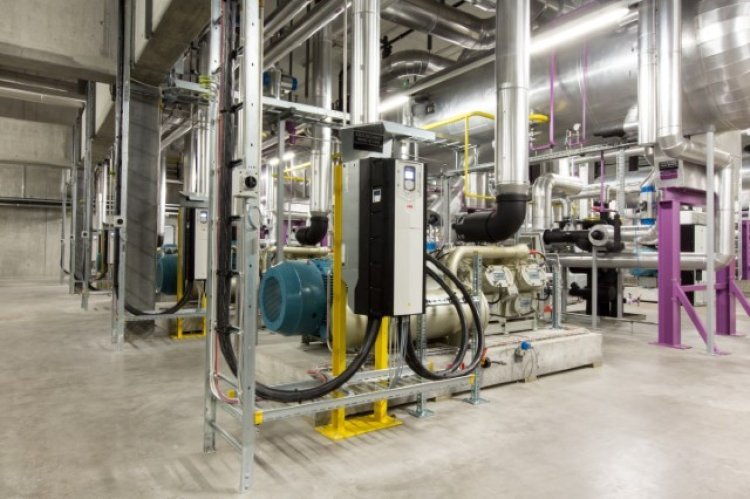How to Select the Right AC Drive for Your Machinery

Selecting the right AC drive for your machinery is crucial to ensure optimal performance, efficiency, and longevity. AC drives, also known as variable frequency drives (VFDs), are essential in controlling the speed and torque of electric motors. For AC Drive buyers, the selection process can be daunting due to the myriad of options available. This guide will help you navigate the critical factors to consider when choosing an AC drive for your machinery.
1. Understand Your Application Requirements
The first step in selecting an AC drive is understanding the specific requirements of your application. Different applications have varying demands in terms of speed, torque, and control. Consider the following:
- Load Type: Determine whether your application involves constant torque (e.g., conveyors, hoists) or variable torque (e.g., pumps, fans). AC drives are designed to cater to different load types.
- Motor Specifications: Know the motor’s horsepower, voltage, current, and frequency ratings. This information is crucial for selecting a compatible AC drive.
- Environmental Conditions: Consider the operating environment, including temperature, humidity, and potential exposure to dust, chemicals, or water. Choose an AC drive with the appropriate protection rating (IP rating).
2. Determine the Required Features
AC drives come with a variety of features that cater to different operational needs. AC Drive buyers should assess the necessary features for their application, such as:
- Speed Control: Precise speed control is essential for applications requiring varying motor speeds. Ensure the AC drive offers the desired level of speed regulation.
- Torque Control: Some applications require specific torque control. Look for drives that provide accurate torque management.
- Communication Protocols: Modern AC drives often support various communication protocols (e.g., Modbus, Ethernet/IP) for integration with control systems. Ensure compatibility with your existing setup.
- Safety Features: Safety is paramount. Look for drives with built-in safety functions such as overvoltage protection, thermal overload protection, and emergency stop capabilities.
3. Consider Energy Efficiency
Energy efficiency is a significant factor for AC Drive buyers. Using energy-efficient drives can lead to substantial cost savings and reduced environmental impact. Look for AC drives with:
- High-Efficiency Ratings: Choose drives with high-efficiency ratings to minimize energy loss during operation.
- Energy-Saving Functions: Some AC drives come with energy-saving modes and features that optimize power consumption based on load demand.
4. Evaluate the Control Method
Different AC drives offer various control methods, each suited for specific applications. Common control methods include:
- Volts per Hertz (V/f) Control: Suitable for simple applications with moderate speed control requirements.
- Sensorless Vector Control: Offers better speed and torque control without the need for a feedback device.
- Closed-Loop Vector Control: Provides precise speed and torque control using feedback from an encoder or resolver. Ideal for applications requiring high accuracy.
5. Assess the Drive’s Size and Mounting Options
The physical size and mounting options of the AC drive are important considerations, especially in space-constrained environments. AC Drive buyers should check:
- Dimensions: Ensure the drive’s dimensions fit within the available space in your control panel or machinery.
- Mounting Options: Verify the available mounting options (e.g., wall-mounted, panel-mounted) and choose one that suits your setup.
6. Review Manufacturer Support and Service
The reliability and support provided by the manufacturer are critical factors. For AC Drive buyers, consider:
- Warranty and Service: Check the warranty period and the availability of after-sales service and support.
- Technical Support: Ensure the manufacturer offers robust technical support, including documentation, training, and troubleshooting assistance.
- Reputation and Reviews: Research the manufacturer’s reputation and read reviews from other users to gauge reliability and performance.
7. Calculate the Total Cost of Ownership
While the initial purchase price is important, AC Drive buyers should also consider the total cost of ownership (TCO). This includes:
- Initial Cost: The purchase price of the AC drive.
- Installation Costs: Expenses related to installing and configuring the drive.
- Operating Costs: Energy consumption, maintenance, and potential downtime costs.
- Lifespan: The expected lifespan of the drive and potential replacement costs.
Conclusion
Selecting the right AC drive for your machinery involves a thorough understanding of your application requirements, evaluating necessary features, and considering factors like energy efficiency, control methods, and manufacturer support. By carefully assessing these aspects, AC Drive buyers can make an informed decision that ensures optimal performance and longevity of their machinery. Remember to also factor in the total cost of ownership to achieve the best value for your investment. With the right AC drive, you can significantly enhance the efficiency and productivity of your operations.







